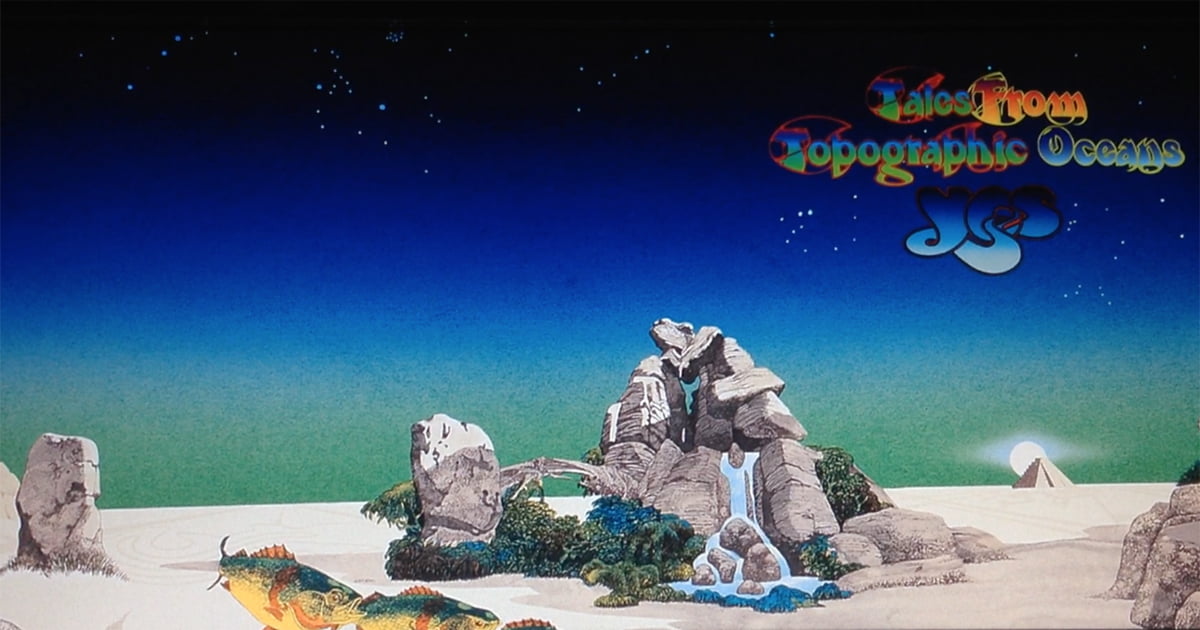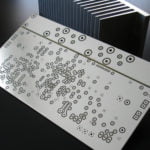It’s the time of year for saving money!
Y’know folks, time is a funny thing. It heals wounds. It gives us perspective. Time lets us more clearly see “the big picture,” reassessing situations once blurry. Especially when it comes to music, time gives us the opportunity to go back and rediscover recordings which — for one reason or another — we didn’t like the first time around or, perhaps, missed entirely due to circumstance.
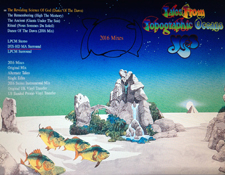 There have been numerous bands and artists I’ve come around to appreciating in recent years due to this factor, from Fleetwood Mac to The Clash (yes, you in the back row… I wasn’t a fan of either of those groups back in the day). Heck, I’ve even come full circle to appreciating peak-period Disco for what it was, discovering some fun joys there (amidst the dreck!).
There have been numerous bands and artists I’ve come around to appreciating in recent years due to this factor, from Fleetwood Mac to The Clash (yes, you in the back row… I wasn’t a fan of either of those groups back in the day). Heck, I’ve even come full circle to appreciating peak-period Disco for what it was, discovering some fun joys there (amidst the dreck!).
That said, I hope this review helps to begin a conversation about one of my favorite albums ever (really!) and perhaps suggest that you reconsider it with open ears and open mind.
For those not in the know, the album in question is called Tales From Topographic Oceans by British progressive rock pioneers, Yes. This album came out in 1973 as a follow on to the enormous breakthrough success of the group’s fifth album, Close To The Edge (now considered widely — and justifiably — a progressive rock masterpiece).
Smash hit albums being what they are, almost invariably, no matter what the band would issue after a recording like Close to the Edge, it would be a very, very hard act to follow. Bravely — or perhaps brazenly, depending upon your perspective — the band issued a sprawling two LP set featuring “just” four songs, each an album side long. Each track was an individual epic, seemingly requiring some effort for the average listener to get into.
Based on four Hindu texts called “Shastras” which Yes co-founder and lead singer Jon Anderson read about in a 1946 book by Paramahansa Yogananda called Autobiography of a Yogi, there is no doubt the album is a complex thing to grok.
Fortunately for me, I tend to approach my musical journeys from the melodic standpoint first, delving into things lyrical once I’m deeper into the sounds at hand. It always happens this way for me, from Dylan to Miley Cyrus: the melody, a voice, an instrument sound or something dynamic and rhythmic has to draw me into the artist’s world.
Unfortunately, despite its success at retail, Tales From Topographic Oceans may have proven too heady a nugget for many listeners to crack, despite the album (according to the Wiki) going Gold, reaching #6 in the US pop charts (selling more than 500,000 copies at that time) and topping the UK Album Chart for two weeks. In subsequent years, the album has been lambasted by many as excessive and some even pinpoint it as the “jump the shark” moment where progressive rock as a genre overall became a parody of itself (I disagree there, but that is another discussion entirely).
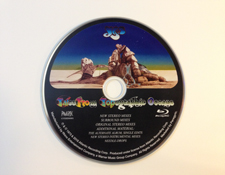 I suspect that some people have trouble listening to Tales From Topographic Oceans because it requires your attention for at least 20 minutes a side, if not a full 80 minutes when taking in the whole album. Musical themes that flow in and out, developing much like a classical work, so it requires some participation from the listener to follow it. It is not compact and tidy like Yes’ hit single “Roundabout” (from 1971) nor is it a concise single album-side length statement like Close to the Edge — paraphrasing Jon Anderson in the liner notes to this reissue, it is ‘four Close to the Edges,’ if you will, lined up end to end. Tales From Topographic Oceans is a complex work of connected themes which ebb and flow (if you’ll pardon the cliche) like the sea. It is less a progressive rock album than a modern electronic, multi-timbral, neo-classical work.
I suspect that some people have trouble listening to Tales From Topographic Oceans because it requires your attention for at least 20 minutes a side, if not a full 80 minutes when taking in the whole album. Musical themes that flow in and out, developing much like a classical work, so it requires some participation from the listener to follow it. It is not compact and tidy like Yes’ hit single “Roundabout” (from 1971) nor is it a concise single album-side length statement like Close to the Edge — paraphrasing Jon Anderson in the liner notes to this reissue, it is ‘four Close to the Edges,’ if you will, lined up end to end. Tales From Topographic Oceans is a complex work of connected themes which ebb and flow (if you’ll pardon the cliche) like the sea. It is less a progressive rock album than a modern electronic, multi-timbral, neo-classical work.
Anyhow, with this new reissue, master remix-remaster engineer and musician composer Steven Wilson (of Porcupine Tree fame) has completed the fifth in his series of restorations of Yes’ classic back catalog and I think the results are spectacular and compelling…
He put a lot of time an effort into it. On the progressive rock retail website BurningShed.com, he says “I worked on and off for about three years on this new mix in my quest to do it justice. I hope it will satisfy the people who agree with me that it may just be Yes’s pre-eminent masterpiece.” Steven Wilson
Indeed, I agree with Mr. Wilson and this new reinvention may be a good reason for the naysayers of the past to give the album another chance. For the already-converted (like me!) it offers much fresh perspective. The new Steve Wilson mix of Tales From Topographic Oceans may ease some of the problems many listeners seem to have with the album; there are many hardcore Yes fans who are very, very divided on this album, some like me who hold it in highest esteem and others who can’t bear to be even be near the recording, much less listen to it.
Its genuinely polarizing… and that alone should make you want to check it out if you haven’t heard it yet…
On Steven Wilson’s new Stereo remix of Tales From Topographic Oceans, all of the instruments have much more focus and detailing. Alan White’s drums are louder and clearer and they somehow seem to rock harder than in producer Eddie Offord’s original mix. Rick Wakeman’s keyboards are more prominent and thus you hear many addition parts that were previously buried. Special effects transition between movements sound much more punchy and dramatic as if a conductor was driving an orchestra with swells of sound. Chris Squire’s bass parts are positively ripping at times. Steve Howe’s brilliant guitar work has never sounded better and all the vocals sound enormous.
The bonus tracks are quite revelatory, especially hearing studio work throughs of full album sides (ie. the “alternate album”) revealing that the band learned this material as a complete work from the start — it was not pieced together in the studio and then learned to take on the road.
]]>Again, according to the BurningShed.com website: “All of the key material (the 2016 Steven Wilson mixes – stereo, 5.1, singles edits and instrumentals) is included, as mixed, in 24/96 with no compression, mastering or alteration made to what emerged from Steven’s studio. The original master is also presented with no compression, mastering, or alterations from the source transfer at 24/192. The additional material, a full album of alt takes and two full album needle drops, is included at 24/48. “
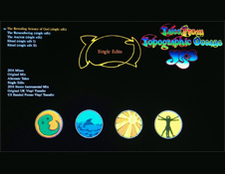 I have listened to the three CDs in the car and on my home systems and they sound quite excellent all things considered (I really enjoyed driving up the coast listening to this from Jon Anderson’s present home town of San Luis Obispo back to San Francisco on my way home from Desert Trip!).
I have listened to the three CDs in the car and on my home systems and they sound quite excellent all things considered (I really enjoyed driving up the coast listening to this from Jon Anderson’s present home town of San Luis Obispo back to San Francisco on my way home from Desert Trip!).
For most of you, Dear Readers of Audiophilereview.com, the Blu-ray included in the four disc set, will be your point of focus in this set, sounding quite wonderful in 96 kHz, 24-bit LPCM Stereo (and, again as mentioned previously, 192/24 for the original master). Rich and round without the harsh CD edges common to the CD format, Steven Wilson has delivered a big almost cinema-scopic soundstage.
And it is that combination of dramatic, up-front presence and increased detailing which I suspect — and hope — will engage more listeners to appreciate this grand work.
When listening to the uncompressed original mix of “The Ancient” in 192/24, Alan White’s drum sticks resonate with the ambiance of the room whereas on the original UK vinyl transfer (included on the Blu-ray), they are pushed more to the back of the mix — probably partially due to the nature of the mix and the LP mastering (as well as, perhaps, the nature of the way this “needle drop” was created — so many variables of stylus, transfer path, etc. which can impact the sound).
On Steven Wilson’s new 2016 mix, those same drum stick hits percolate to a point where you can almost visualize Alan White hitting the sides of his drums in different spots. Its all sounding so much more alive and realistic now and less about being bathed in reverb.
And then there is Chris Squire’s badass-as-funk intense bass lines which were all but invisible to the listener on the original mix and are now a virile part of that portion of the music. They are not only audible, but they presented as an essential part of the recording. Honestly, hearing “The Ancient” this way I have to wonder what caused them to drop the bass so far back in the mix on the original?
(Its so freakin’ cool! What were they thinking?)
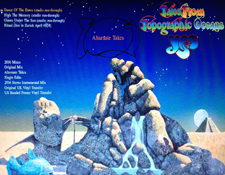 The “Leaves of Green” section at the end of that side has never sounded more gorgeous and direct with Steve’s lush classical guitar front and center along with harmonies to Jon’s lovely lead vocal while Rick Wakeman’s organ wraps it all in a lush umbrella of keyboard ambiance. The massive reverb is still there on Steve’s guitar but it is all presented in a much more direct manner now.
The “Leaves of Green” section at the end of that side has never sounded more gorgeous and direct with Steve’s lush classical guitar front and center along with harmonies to Jon’s lovely lead vocal while Rick Wakeman’s organ wraps it all in a lush umbrella of keyboard ambiance. The massive reverb is still there on Steve’s guitar but it is all presented in a much more direct manner now.
I don’t mind hearing these new layers of instrumentation revealed in Steven Wilson’s new mix. In fact, I like hearing all this new music and a new perspective on a favorite recording. I think the new parts add to the recording, not detract — overall there is nothing jarring that would upset even us hardcore fans of the album.
No, this new 2016 mix is like a window that has been opened revealing details many of us dreamed in our heart of hearts might be there — it just took a wizard like Steve Wilson to have the vision and talent to bring it all to the forefront.
So there you have it: Tales from Topographic Oceans is now available for your consideration — or reconsideration — in spectacular new stereo mix.
For part two of this review I’ll be exploring Mr. Wilson’s 5.1 surround sound mix which is also included on the Blu-ray in this set.
Watch for it soon on Audiophilereview.com.
